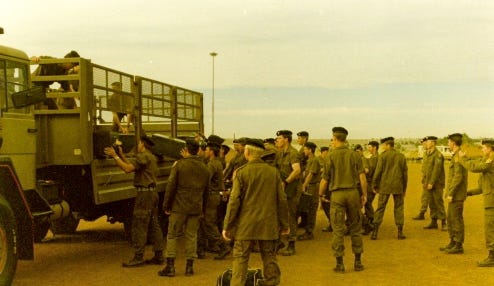Lore Stories: War Stories, Part II - School of Artillery
Conscripted into the South African Defence Force. Ready for peace in a time of war.
SEE PART I
The Junior Leader (JLs) cohort was shipped off to the School of Artillery (‘Artskool’ or ‘Art School’), five miles away from 10 Artillery Brigade and adjacent to the Air Force base,1 having endured about 2.5 months of basic training, gained fighting muscle and fitness, become necessarily very fluent in written and spoken Afrikaans, navigated the socio-cultural chaos of having to sharing space and time with thoroughly unlikeable people, and met the requirements for leadership selection.
The larger camp complex of Artskool included the regional officers’ quarters, and that was my never publicly revealed primary motivation for wanting to be selected. You could escape tents, bungalows, and food slopped onto a varkpan (stainless steel “pig pan”) in crowded, dirty dining halls. Plus, non-commissioned officers had to salute you, and that was sweet trolling after the antics of some NCOs during basic training.
Officers lived two to a room with an independent bathroom. They had reasonable freedom outside work hours, field exercises, and occasional obligations to be the Northwest Regional Command officer on duty overnight. Officers could also have personal vehicles at the quarters and commute to work at the base or use the provided buses. Even more attractive, officers dined at a dedicated mess and were served good meals on white china with proper silverware and fabric serviettes (napkins). By contrast, the NCOs had to live on base with the troops.
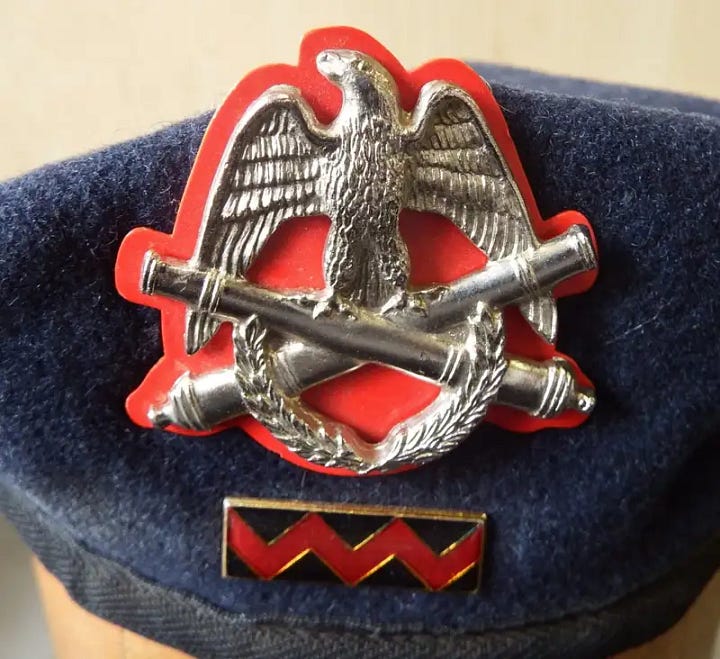

The intensity increased several notches for the first weeks before it dissipated as they focused on teaching us to be soldiers responsible for other people and achieving objectives. Artskool went by quickly because the tempo was high, and a professional assertiveness was palpable, which was not the case during basic training.
We finally got to work with artillery pieces and everything that goes into being a functional unit. Training was divided into two phases:
Basic Instruction: drill, infantry skills, safety, gun handling and maintenance, and crew roles. Introduction to different artillery systems, areas of observed fire, and fire direction.
Advanced Instruction: drill, safety, and operation up to battery level. Training for manoeuvre force, target acquisition, survey, and counter-fire. Field gunnery operations, fire direction, observed fire, and firing battery operations.
There was much classroom time, study, and testing, which I was not diligent about. Somehow, I passed the fire control phase involving the ridiculous HP-41 CV calculators with plug-in card readers used to calculate trajectories and adjust for meteorological conditions. We had a single PC with shockingly bad software that took longer to compute than the HP-41s, so it was always an ornament in the fire control post. What I did not pass was a relatively simple radio course, resulting in a do-over with a cancelled weekend pass and double guard duty. That event almost landed me with a “Rooi Doiby” (red helmet) ‘Confined to Barracks’ (CB) outing, as well as possible expulsion from Artskool to return as a gunner to one of the 10 Artillery Brigade batteries.
A Suidwester (South Wester), also confined to base, drugged my drink at the camp bar before we went on duty that night. I was first watch at the officer’s headquarters gate, due to end after midnight, when he was supposed to take over. However, I passed out well before midnight, and we both got to sleep in… Fortunately, I regained consciousness with enough time to return to the falling out parade and before the watch commander noticed or realized the logs had been falsified. I plotted revenge, but this individual was the sort who would stab you in the eye while you slept, so it was discretion over valor. I don’t believe he ever received his commission.
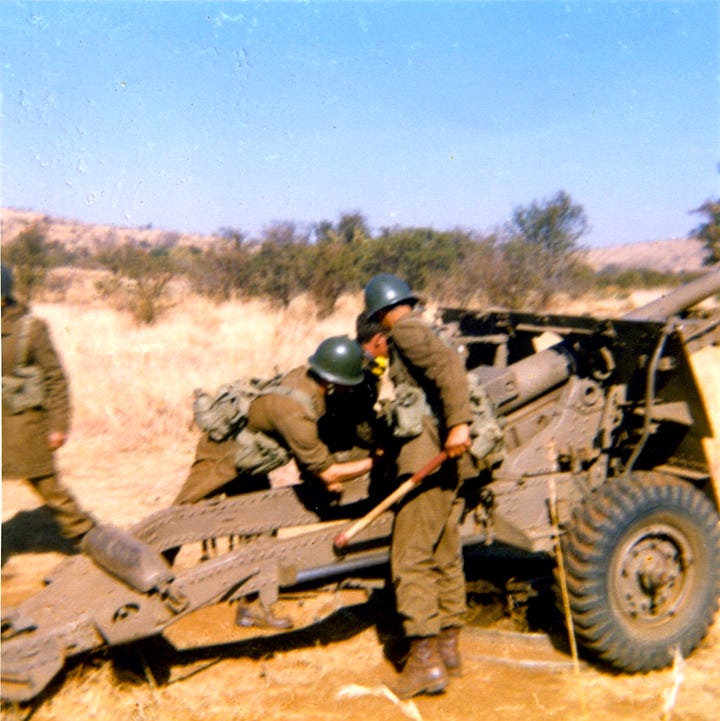
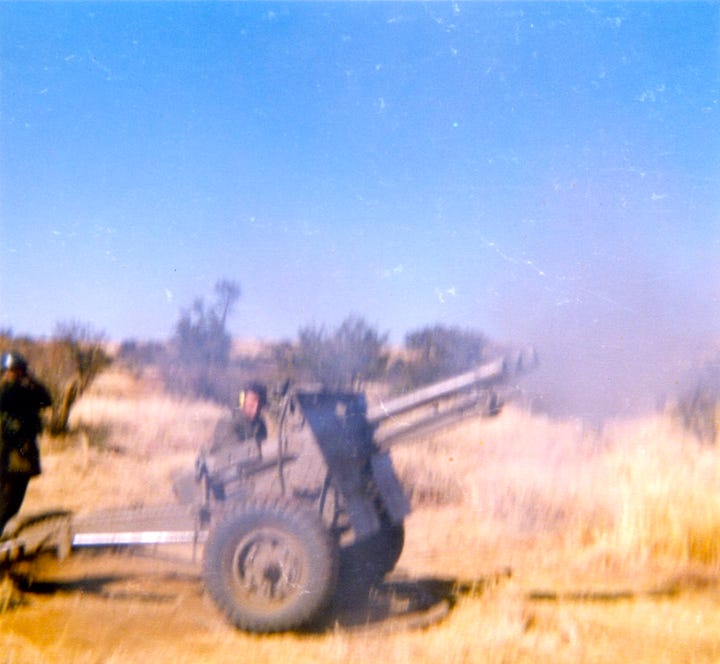
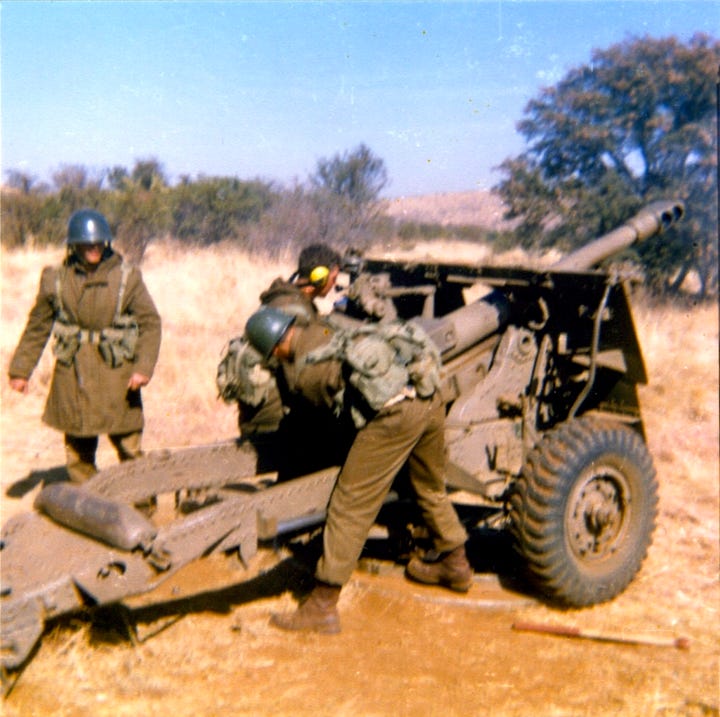
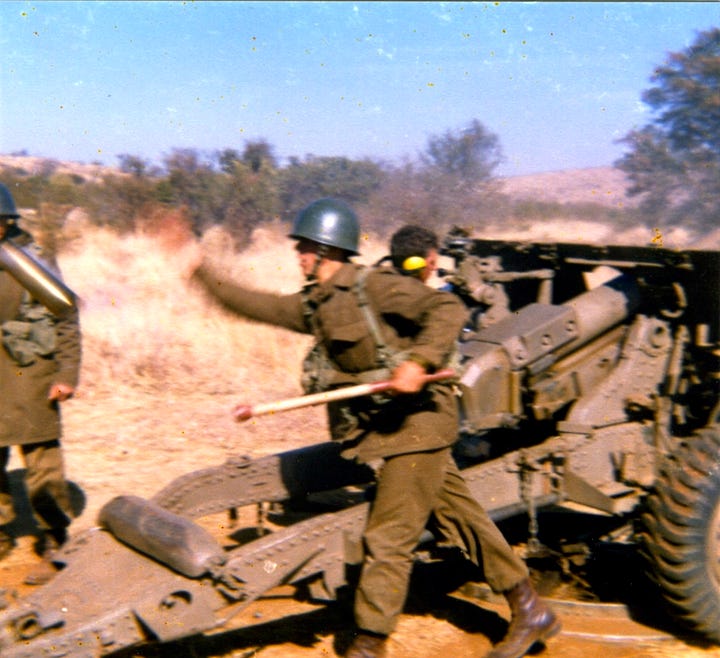
I missed a critical field exercise with larger guns than the G1 25-pounder when I contracted mumps and was shipped off to the local base hospital. It was a glorious week lounging around with nothing better to do than read all the Solzhenitsyn I could lay my hands on2. However, it was costly to miss that bridging from the small, easily handled gun to the much bigger G2 5.5-inch howitzer and all the differences entailed for systems and different personnel roles.


Being behind the curve was compounded when I missed another formative chunk of a complicated field exercise close to graduation from Art School. Some genius thought it should be as real-world as possible, and a colleague and I were “captured” within three hours of starting the exercise. We were assigned to do high-order artillery survey (HOAS), which relied on paper maps, theodolites, gyroscopes, and triangulation beacons3 to calculate precise positioning so that projectiles landed in the right place (GPS was just emerging and was unreliable). Unfortunately, we climbed onto a kopje with the best view in the area to see all the trig beacons, which happened to be 100 meters from the “guerrilla camp” in a nearby cave. The “guerrillas” held us for 3 days, ruining the chance to hone our skills and also wrecking the HOAS team’s final training because nobody knew what had happened to us, and there was an assumption we had gone AWOL with critical equipment.
Once we were “released” and returned to our unit, it was a shock to find that two females had joined the training from the Women’s Army College in George, Cape Province. Apparently, the purpose was to assess their ability to function in an artillery unit, but it was a fiasco.
They had to be accommodated constantly, starting with separate bathroom facilities, since military field latrines are communal and pretty disgusting. Likewise, their sleeping arrangements had to be managed to keep them well away from the men. They did not have enough strength to move the spades or the trailing arms of the guns, could not lift and move the 5.5” and 155mm projectiles alone, could not heft some of the tools and maintenance equipment, and had difficulty climbing into and out of trucks. They could do the technical work, but it’s pointless if you don’t know firsthand how the weapons work or how they must be handled.
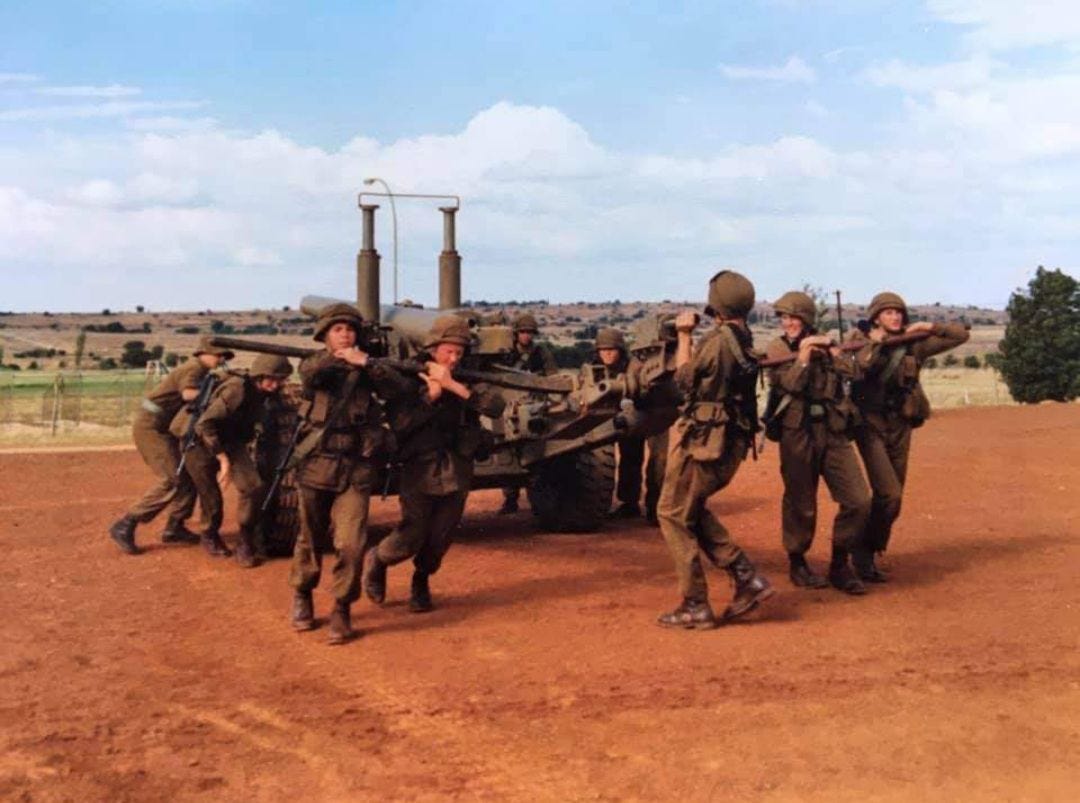
Vasbyt
Toward the end of Phase I for every JL course in the SADF, troops are put through a weeklong Vasbyt4. It was designed to shake out any remaining weak candidates and for everyone to receive an evaluation that was determinative of our final postings. The bombardiers continually hyped Vasbyt, warning us that it could happen on any day and at any time. Long and tall stories were told of the suffering we were going to experience, and that nobody would make it because we were the worst intake in history.
The moment arrived in late May 1987 at 23h30, when we were rousted from bed and told to tree aan (form up) in 30 minutes with rifles in full kit and ready to have the bungalow inspected. Once formed up, everything had to be unpacked and searched for hidden food or booze. Then they doled out the week’s companions - ammunition cases filled with sand, massive bluegum tree logs, tires, and a hefty dose of not knowing what was happening next.
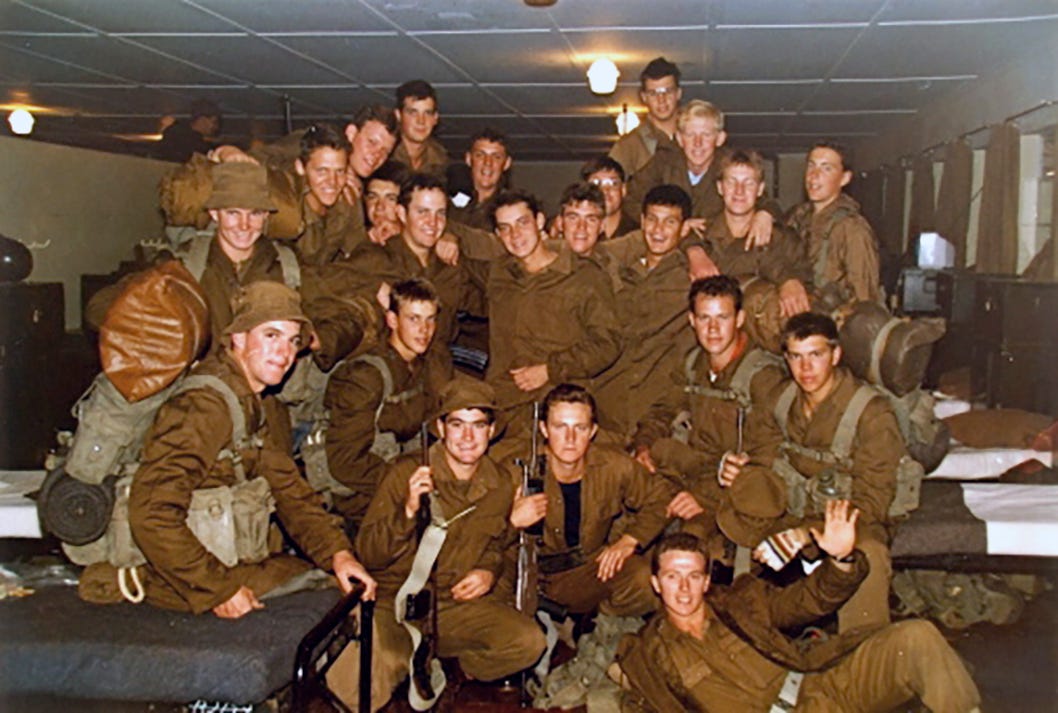
Golf Troop’s rotation was to open with a timed 50km route march, starting near Ventersdorp. I packed every pair of socks I owned based on the theory that happy feet make for a happy life. I had also ensured that my best set of boots (two pairs issued at basic training) would be used for Vasbyt. At every second break, I would change socks and let the used pair air dry on my pack until I could find standing water to wash them. It was a sound strategy, and I had minor blisters compared to the rest of the troop, with many guys in serious trouble before the first day was finished.

Now and again, a truck would slow to a crawl next to us, with bombardiers offering chocolate bars and Cokes to anyone who wanted to quit and climb aboard. Nobody from Golf Troop took the bait, but we heard of other troops where guys gave up and were immediately shipped out of Art School.
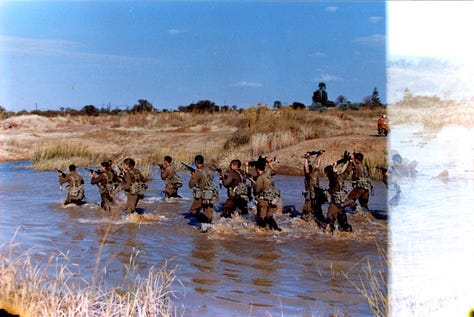
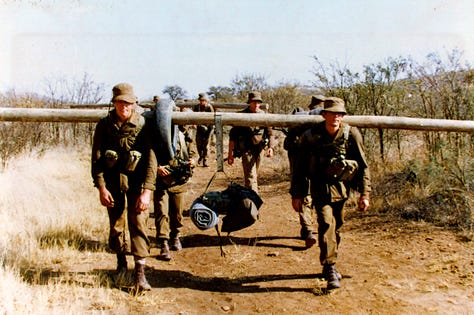
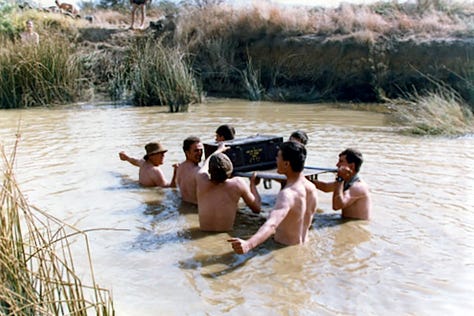
At one point, we were marched to an assembly point and told to prepare for a meal. Hot boxes arrived with bacon, scrambled eggs, and coffee. Formed up with our field kits and about salivating, the dominee (chaplain) said grace, only for the food to be dumped into trenches before we were told to fill our water bottles and head out on a new route march. That broke several guys, some of whom could not pull it together, and were removed.5
Eventually, we were marched back to Art School and told we could shower, clean our mud-caked kit, and sleep in the next day. Everyone was in great spirits because it was over. The guards opened the gates to let us in, but as we moved into the camp, the command came to reverse, and we were marched around the perimeter of Art School for one last bit of gamesmanship.
Downslope
With Vasbyt out of the way, we could coast to our commissioning as officers and NCOs and assignment to the units where we would complete National Service. It was also an anxious time because there were several permutations of where you might end up since men were dispersed all over the country and to South West Africa to join combined arms units or return to 10 Artillery Brigade.
You had to be assigned a specialization, which in my case was Fire Control Officer (FCO), even though my specialization training was high-order artillery survey. You could be sent to one of the mechanized infantry brigades or specialized units, and we had started to hear rumors about those units being engaged in serious combat:
61 Mech based in Omuthiya / Tsumeb, SWA;
62 Mech/4 SAI in Middleburg, Transvaal;
2 SAI in Walvis Bay, SWA (although the battery was almost entirely composed of Suidwesters by 1987);
32 Battalion at Buffalo and Rundu, SWA; and
44 Parachute Brigade, Light Artillery Regiment (uncommon), Bloemfontein, Orange Free State.
Fortunately, I was assigned back to my old unit, 41 (Papa) Battery, 4 Artillery Regiment in Potchefstroom, with a great team of JLs. We would conduct basic training for the 1988 intake, transition to gunnery training on 120mm mortars, and then deploy to the operational area.
Overall, being a second lieutenant before my 19th birthday and just 10 months after writing matric exams felt very peculiar.

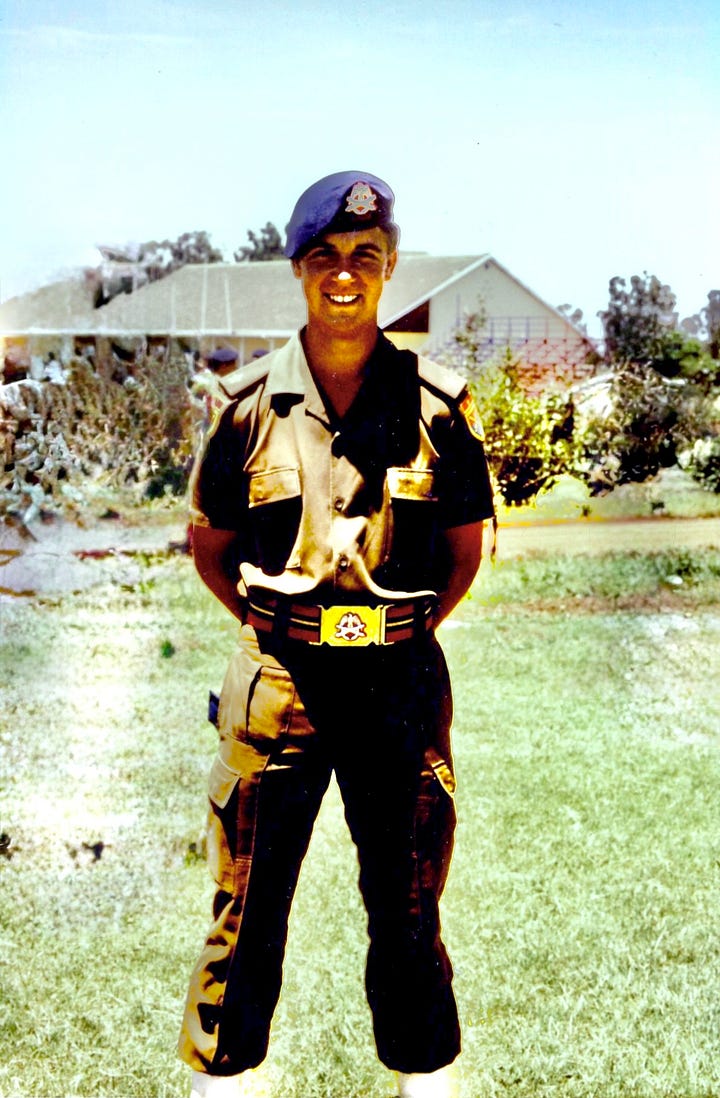
Return to Papa Battery
After a short leave, we returned to join our assigned units for the remainder of National Service. We discovered a very different atmosphere and a level of urgency that was not apparent during basic training or during Art School. Outside the Papa Battery bungalows, the grass quadrangle had a fresh memorial honoring 4 Artillery’s deceased officer commanding, Commandant Johann du Randt (32), who was killed in combat in Angola as we were receiving our commissions.

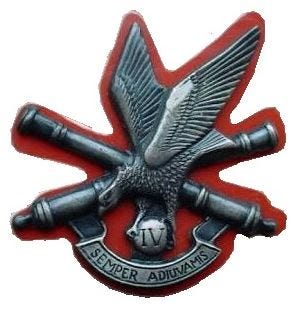

He and a pilot, Lt. Richard Glynn (21), were killed when a missile from an SA-8 Gecko hit their Bosbok light reconnaissance plane on September 3, 1987, south of the Lomba River, Cuito Cuanavale, Cuando Cubango, Angola. Du Randt was conducting a forward observer mission for several units that had been rushed to the area for Operation Modular.
A massive combined arms force of Angolans and Cubans, directed by Soviet advisors, was advancing on the town of Mavinga with the hope of reaching the UNITA HQ at Jamba in deep southeast Angola. In 1985, the South Africans stopped a similar operation but they became complacent about the threat. However, it did accelerate the need to equip the army with accurate long-range artillery.
Operação Saludando Octubre had commenced in July 1987 under the command of Lieutenant General Pyotr Gusev. The Soviets poured $1 billion of materiel into Luanda, landing up to a dozen Antonov An-24s daily. The lift included sophisticated anti-aircraft missile systems, which caught the SADF off guard because it did not believe those systems could survive the bush breaking required to get from Luanda to Mavinga. The missile threat severely constrained SA’s given air superiority, combined with Cuban piloted MiG-23s that overmatched SA’s aging Mirage F1CZs/F1AZs, Mirage IIIs, and Aermacchi MB-326s.
Consequently, the task of stopping the Angolan-Cuban assault fell primarily to the long-range artillery units, which had been equipped with evolved home-grown guns, the G5 and G6 platforms, that could accurately reach targets ~40km/25m away using a base bleed projectile. The rocket units were also involved in all phases.
In hindsight, the unexpected arrival of Citizen Force leadership at Art School for “refresher” training in August 1987 was preparation for their units to fill the gap in Angola since the outgoing National Service intake had to be demobilized no later than December 15, 1987.

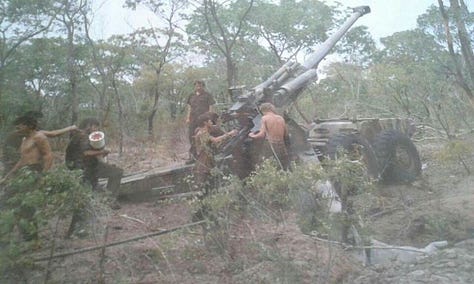

INSTALLMENT TO COME: TRAINING THE NEW INTAKE & DEPLOYING TO THE OPERATIONAL AREA
11 Squadron (Cessna 185s), 42 Squadron (Taylorcraft Austers and, later, Cessna 185s, Bosboks and Kudus), and 103 Squadron (a volunteer civilian squadron flying civilian types). Later, in 1982, the SAAF established the 84 Light Aircraft Flying School in Potchefstroom.
Reading Cancer Ward while in the hospital was a peculiar experience.
I never understood the reliance on trig beacons in training. They were unavailable in the operational area for several reasons, but mostly because the area was flat as a pancake with dense forests in the east. Everything was conducted by dead reckoning on ancient paper maps with confirmation from forward observers.
Vasbyt: pronounced “fahs-bait,” the literal translation is “bite hard,” and it derives from the leather straps used to clench teeth on during surgery without anesthetic.
Food was also used like this during Standard V (7th grade) Veldskool. We were sent on a 2-hour orienteering night march, had a light breakfast after a short sleep, and then sent on a several-hour march to where we were supposed to be fed lunch. Lunch comprised two slices of white bread, a water bottle refill, and a return march to the main camp. There were lots of teary faces and frisky language from guys who thought it was the end of the world.



